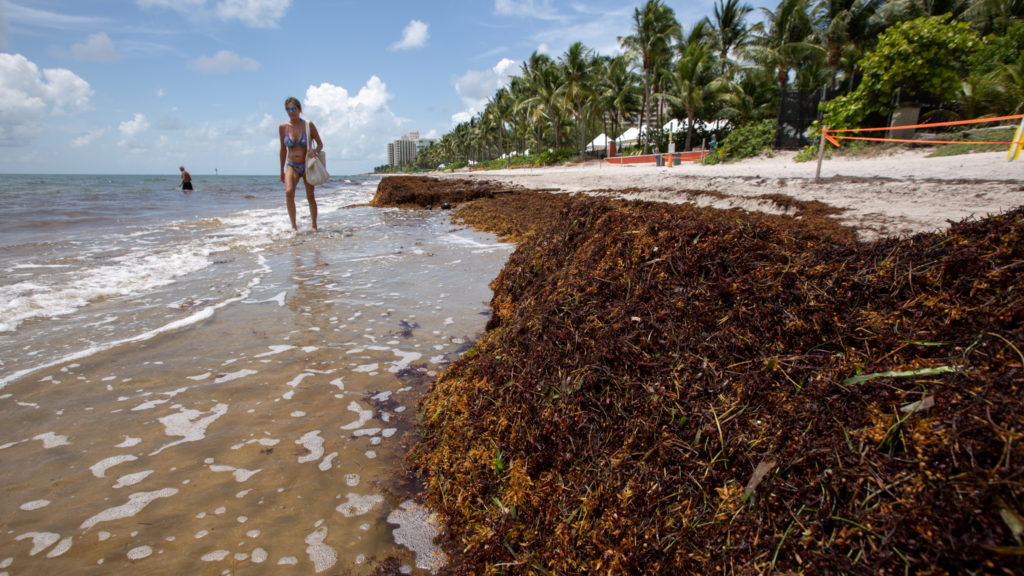Village Doubles Sargassum Plowing as Stinky Seaweed Surges
Tony WintonJuly 22, 2019

A woman walks past mounds of sargassum seaweed along the Atlantic Ocean beach in Key Biscayne, July 18, 2019. Officials are increasing the plowing to deal with the surge in the smelly seaweed that is believed to be fueled by fertilizer runoff. (Key News/Tony Winton)
The Village of Key Biscayne added a second shift of seaweed plowing to deal with a surge in foul-smelling sargassum drifting ashore this past week. Village Public Works Chief Jake Ozyman says the extra plowing is expected to continue this week as well.
While the extra plowing is within the Village budget, Key Biscayne and other South Florida communities are trying to come up with longer-term solutions to the seaweed, which tourism officials fear will scare visitors away from beaches.
The additional plowing depends on tides and coordination with Miami-Dade County officials to protect sea turtle hatchlings, which have been spotted scampering into the surf, Ozyman said.
Midweek, the flow of sargassum was so intense that mats of the seaweed could be seen from high-rises, while some pockets were three feet deep or more.
The sargassum problem along South Florida beaches won’t be going away anytime soon, a study released earlier this month found.
The University of South Florida report suggests the slimy seaweed is on track to continue to be just as bad for coastal regions as in the past.
The university’s team, which includes Mengqiu Wang, discovered in satellite images that areas of this type of seaweed stretched across surface waters from West Africa to the Gulf of Mexico.
They estimated that it weighed more than 20 million tons.
“The oceans are connected across the regions and we are going to see more sargassum coming to the Florida coast,” Wang said. “It is not fatal, it is not poisoning tides; it is more of a public nuisance and can cause some public health concerns.”
The thick seaweed also releases hydrogen sulfide gas that smells like rotten eggs, which can cause problems for those with respiratory issues.
Wang said climate change also played a role. Rising seawaters and an increase in nutrients from river sources, such as the Amazon River, make its way to the sea, causing the sargassum to increase in growth.
In Key Biscayne, Ozyman said officials are evaluating a $1.9 million plan to remove the seaweed instead of plowing it back into the sand. Another idea involves placing ecologically-safe barriers in the water to intercept the sargassum before it gets to shore, but Ozyman said a company proposing such a system is still working on securing environmental permitting.
Also part of a long-term solution would be cementing the Village’s participation in the federal shoreline protection program, which also would help with beach sand nourishment. The Village is working to assure the U.S. Army Corps of Engineers that local beaches will have enough public access to be eligible for the program.
Associated Press reporter Marcus Lim contributed to this report.



Responses
Albert Most
Jul 30
Release 100 goats at night and round them up in the morning!
Problem Solved!
Then we can have free goat cheese and milk!
The comments are closed.